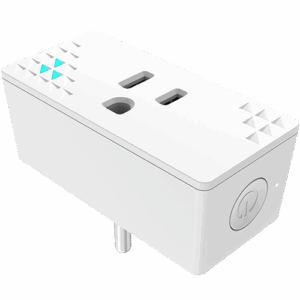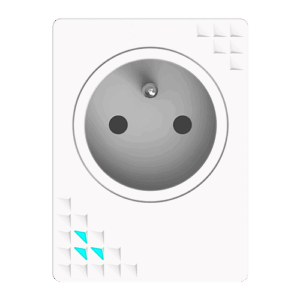Key Takeaways
- Fires cause enormous property damage and loss of life. In 2020, this meant $21.9 billion in property damage and 3,500 deaths in the US alone.
- Digital sensing solutions help prevent and protect against fires through relaying smoke alarms to occupants, family members and emergency services.
- In the future, it may be possible for WiFi sensing to detect smoke and fires directly.
Smart homes and buildings have a range of digital sensing technologies designed to make the home safer, healthier and more energy-efficient. Here we look at how digital sensing technologies can help detect smoke and fire damage within the home.
The Destructive Impact of Fire
The impact of fire damage in our homes and communities makes for some sobering statistics:
- There were 490,500 structure fires in the United States in 2020. This is an increase of 1.9 percent on the prior year.
- Fires caused 3,500 civilian deaths and15,200 civilian injuries in that year.
- In the US alone, fires caused $21.9 billion in property damage in 2020.
- Seventy-four percent of all fire deaths relate to fires in the home.
While smoke detectors are now, thankfully widespread, most home smoke detectors simply sound a loud alarm and do not communicate or transmit that alarm any further.
This means that smoke and fire detectors alone offer limited protection:
- They do not notify you that the smoke alarm has been triggered when you are outside the home
- They do not automatically notify other individuals elsewhere, such as family members or emergency services, when the alarm has been triggered
- They only offer one, or perhaps two, channels indicating the alarm has been triggered (sound and light).
This means that a traditional smoke detector set-up is particularly deficient when it comes to protecting vulnerable family members (who may not hear the alarm), or preventing property damage (where no one is around to hear the alarm).
In this article, we explore how digital sensing systems, by integrating traditional smoke and CO alarms into smart home infrastructure, can save lives and properties: Smoke and CO alarms can be relayed to welfare apps on smart devices, providing additional warning (through sound and vibration), and communicating the alarm being triggered to those outside the home.
What is the Definition of Digital Sensing?
So, what is digital sensing? First, it is necessary to establish what sensing in general is: Sensing means any kind of technology that detects physical or biological phenomena, and translates that information into a signal: That could be a digital signal, but it may not be.
For example, an old-fashioned mercury thermometer is a sensor: The mercury responds to physical phenomena (heat), and translates that into a visual representation of temperature (the gauge on the thermometer). Thought of in that way, sensing goes back thousands of years. A sundial is a sensor — translating the visible light energy of the sun into a representation of the time of day.
- Analog signals, mean that the sensor produces a continuous, variable, signal, which is parallel to the measured value. For example, thermometers produce an analog signal (the reading), which is parallel to the change in the mercury.
- Digital signals, mean that the sensor produces just two discrete states, which may be described variously as ON/OFF, True/False, or 0/1. For example, a Passive Infrared (PIR) motion sensor produces a digital signal: Its state is ON and the sensor triggered, when a certain fluctuation in heat energy is detected. Otherwise, it is in its OFF state.
In modern sensing, the concept of a sensor evolves into something that translates physical or biological phenomena into an electrical signal: This includes motion detectors, sound detectors, and smoke and CO detectors.
So, is sensing in the modern smart home, analog or digital? Often, it’s both. But ultimately the output of analog sensors is transmitted into digital signals in order to be interpreted by devices with microprocessors, hence the collective term ‘digital sensing’, for all the sensors in a smart home.
Digital Sensing and Fire Detection
Smoke detectors come in two main forms:
- Photoelectric, or optical smoke detectors, which contain a source of light, such as a light-emitting diode (LED) and a photo-receiver (a component that detects the light from the source): These components are arranged in the casing of the smoke detector, around which, air flows. The light received by the photoreceiver reduces in intensity when smoke particles are in the air, triggering the alarm when a certain threshold is met.
Ionization smoke detectors involve a radioisotope ‘ionizing’ the air. In essence, ions attach to smoke particles, altering the electric current within the unit and triggering the alarm. Ionization detectors are usually cheaper to produce, but are less likely to give early warning of a fire relative to an optical detector.
Distinct from smoke detectors are carbon monoxide (CO) detectors. CO is the odorless, colorless, but lethal, gas produced by incomplete combustion. In their most popular form, CO detectors work by use of an electrochemical cell, precisely calibrated to recognize when the CO levels have increased to a dangerous threshold (through a chemical reaction where CO is oxidized into CO2).
In an ideal smart home set-up, all sensors crucial to the safety and wellbeing of occupants, such as CO and smoke detectors should be integrated into a unified alarm system, such as alerts via an app.
While it is possible to hardwire smoke detectors and CO detectors into such a system, this requires expensive and time-consuming installation and alteration works. A simpler way to integrate these detectors into a digital sensing system is via simple intermediary sensors: A separate audio/acoustic sensor calibrated specifically to the frequency of a smoke or CO alarm is a useful way of integrating those alarms into a digital sensing system.
Once smoke and CO detectors are integrated into a digital sensing set-up in this way:
- Occupants in the home will be alerted to the smoke detector via sound/vibration on their smart device — crucial for occupants who are hard of hearing, or wearing headphones
- Designated family members, neighbors, or friends outside the home, can be immediately informed that a smoke or CO alarm has sounded
- Emergency/fire services can be automatically notified and dispatched.
Can WiFi Sensing Aid in Fire Detection?
WiFi sensing is a form of motion detection that picks up disturbances in the electromagnetic radiation emitted from WiFi. It is an accurate and cost-effective sensing technology for detecting intruders, detecting falls, and ensuring energy-efficient appliances respond appropriately to movement.
Digital Sensing is Integral to Smart Fire Detection Systems
With climate change-related fire risk on the rise, accurate and early smoke detection should be a key part of every individual’s smart home or smart building infrastructure. Digital sensing solutions make it easy to relay smoke and CO alarms to individuals inside and outside the home: This will prevent some fires, mitigate the damage of other fires, and save lives.
FAQ
Strictly speaking (whether photoelectric or ionization), smoke detectors produce a digital signal, as the output is either ON or OFF. In a more colloquial use of the term ‘digital’, smoke detectors become digital when their output is interpreted and communicated by smart devices containing microprocessors.
Acoustic or audio sensors which pick up the frequency of breaking glass (as an intruder alert) or smoke detectors (as a relaying device), are examples of digital sensors.



















